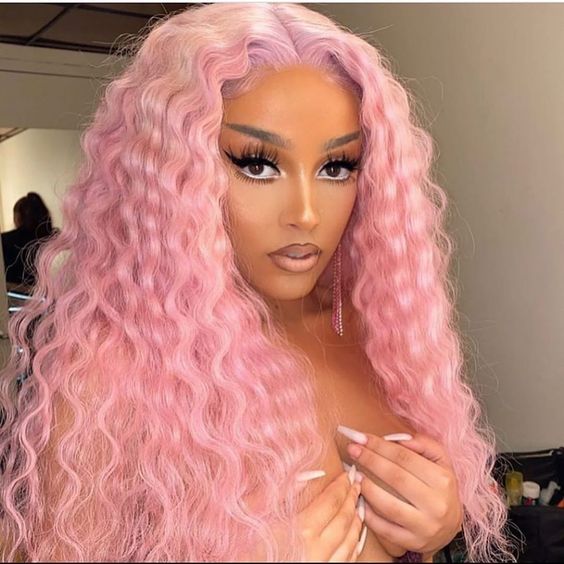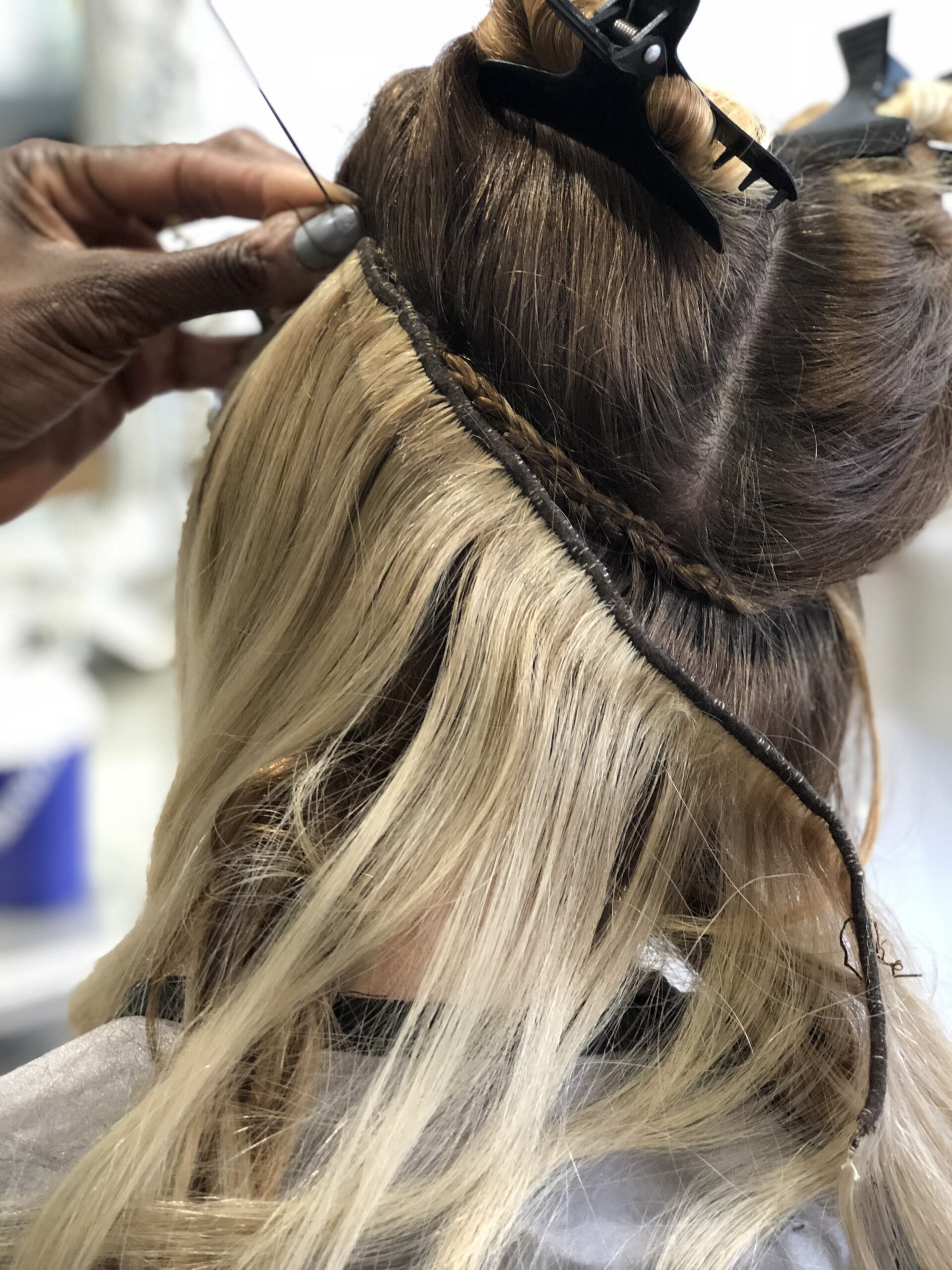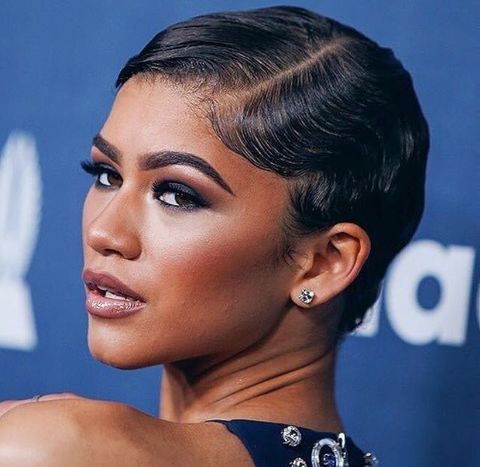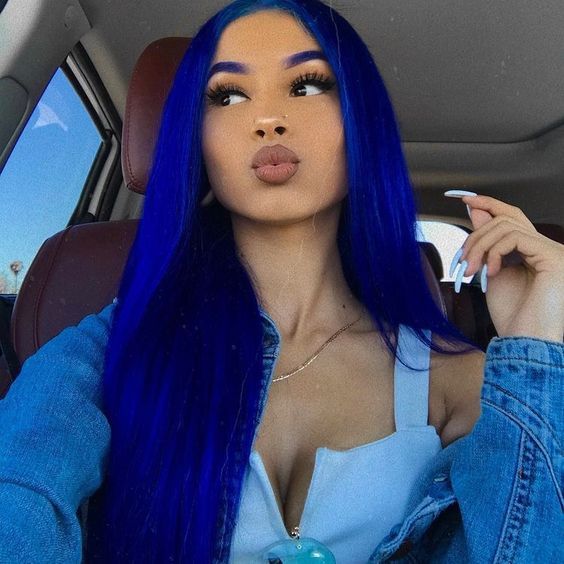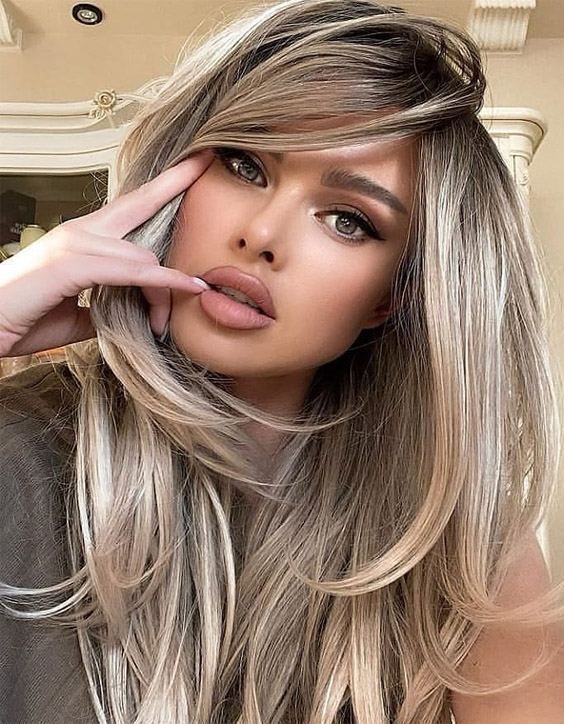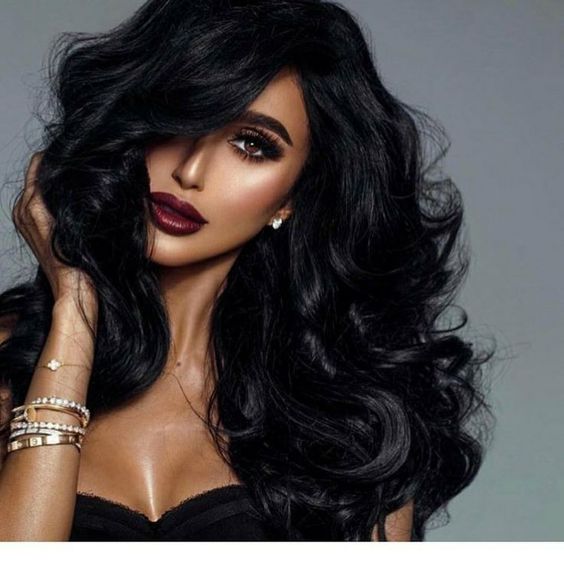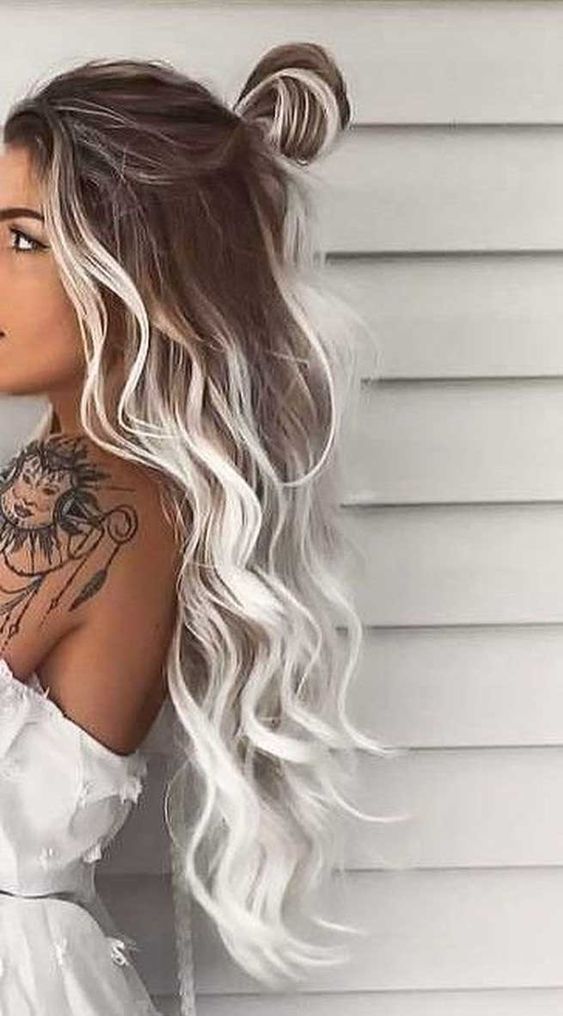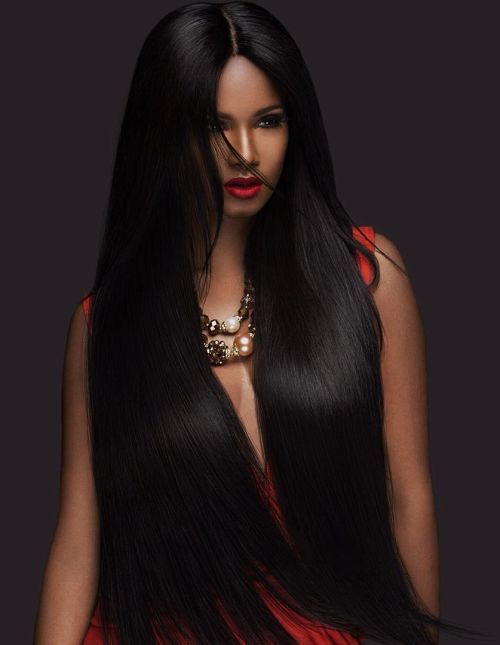I would have expected everything this morning, except to get up and read, thanks to a wigwag of a friend, an Italian newspaper article, with a decidedly retro flavor, and inexplicably targeted to a single nation of the whole 54 African ones.
All I could do was to put myself into my Zen beliefs, breathe the phantom 10 times, sit down and think about why it is so natural for some people to take a part of a story and turn it into something biased, tendentious and intensively questionable.
Newspaper: “La Repubblica”
Date: Wednesday, 19 August 2020
Headline: “A HAIR BUSINESS – The fashion of extensions and wigs makes Nigeria’s head spin“
It’s an article that recalls another feature published on the British weekly Economist. The write-up begins with an incipit that says it all: “If it’s cold: long, loose and thick locks. If it’s wet: a nice medium-cut bob. Nigerian women shrug at the claims of Afro feminists, who denounce subservience to the Western ideals of beauty and, in recent years, have given their country, the world record of wigs and extensions market “.
“They shrug” ?????? Ok. Let’s try to understand each other well. First, however, I would invite you to read page 21 of “La Repubblica“, carefully, before making your contribution with comments and whatnots, because we could all turn out to be characters with a straw tail or very boring and fussy brawlers, who at the word “Africa” will raise their stings, ready to hit, randomly, the first hapless that shoots nonsense.
The first question I asked myself is very simple, and, perhaps, I hope that the journalist who has tried to make a perfect sense of the situation, can, exhaustively, explain to me why, out of all African nations, she chose Nigeria. And why, of all the world nations that freely use extensions and wigs (USA and Canada at the top of the list!), she came out focusing on Nigeria. Is there a particular reason? If the reason for the grip is that “in 2018 Nigeria imported over 3600 tons of human, synthetic and animal hair” (as she wrote), well, I must immediately tackle the data mentioned, remembering that there are countries that have imported much more: at the first place of the hit parade, there is the United States, followed, in order, by Canada, the UK, Germany (and we are already counting 4 NON-African nations, on the chart list!), South Africa, Zimbabwe, Togo … and then we get Nigeria, surely among the strong users, but certainly not among the very first places in the world rankings. You can have some fun going through graphs and numbers on the published data by the more than reliable “OEC – Observatory of Economic Complexity“, as well as by the major economic-financial journals on world trade trends, without setting me up for an engineer expert in statistics on the evolution of Import and Export processes. Which, of course, I am not.
The second question is: are we really down to measuring the need to claim our identity and our origins through the habit of wearing a wig or not? That is to say, the message that, perhaps, we too, like most Western white women, use wigs, simply for an aesthetic reason and not because we want to, forcibly, “look like” white women, does not even pass through some pumpkin heads??? Must everything always be read in a key of enslavement to Western ideals of beauty?
I try to answer myself. But it would be really interesting to have your point of view too, in a world that seems to prefer traveling one way and treat everything that is referring to the black world, as a kind of freak-show, without realizing that, the white world is hanging on the same freak-show, silently doing and undoing, the trends of the moment, at will.
I won’t go further into the bowels of this article, because, indeed, the real, deep aims of who suggested it, are not very clear to me. However, I am left with a bitter taste in my mouth, because of the facility people have in building a dichotomy between the wig and African women, as if an entire page of rather inaccurate data (I would say, also, absolutely incorrect), can, exhaustively, give the picture of the real situation on the WORLDWIDE and INTERSECTIONAL use of this accessory.
But, let’s take a couple of steps back and refresh certain minds with a nice tirade about the meaning of wearing wigs. Indigestible, I know, but it is fair to remind everyone that hot water was discovered millennia ago. In ancient Egypt, both males and females wore wigs made with human hair, sheep’s wool, or plant fibers, depending on their social status. They did it to beautify their shaved heads, partly for the hot weather, partly to defend themselves from lice, which, at that time, was a dilemma. They were part of everyday clothing, indicating the status of a person and his role in a society or in politics. Women’s wigs were adorned with braids, gold, hair rings, and ivory ornaments, which made them more elegant than men’s wigs. Ultimately, the more elaborated the wig was, the higher the social rank was. Other ancient civilizations, whose citizens wore wigs, were the Greeks, Romans, Assyrians, and Phoenicians. For the Romans, in particular, wigs were often made with the hair of slaves. Both Roman women and men wore wigs, whether they were bald or not. Wealthy Roman women often wore unusual elaborate hairpieces, which greatly increased both the volume and the effect of the hairstyle. Some wigs were worn to look natural, but many were intentionally “fake” with braids of contrasting hair colors. The favorite hair for Roman wigs came from barbarian slaves, with their blond hair, and from Indian slaves, with their black hair.
On the contrary, in the ancient civilizations of the Far East, including China and Japan, people rarely wore wigs, other than actors who performed in theaters and some types of entertainers such as Japanese Geishas or Korean Kisaengs.
In the Middle Ages (1200-1400 AD), wigs lost their relevance due to difficult times. Women usually had to have their heads covered, fashion was beyond everyone’s needs and beauty was austere. Then, at the beginning of the Renaissance (1400-1600), women’s hairdressing regained importance and women began to show their hair again. Instead of covering their heads, they adorned their hairstyles with shiny veils and sparkling jewels. Once again women’s wigs emerged when fashion and beauty became important elements in society.
The history of wigs in France dates back to the reign of Louis Xlll, who prematurely became bald. To disguise his baldness, he began wearing elaborate wigs. Historical records indicate that the first independent hairdressing association was created in 1673. The wig enjoyed the noblest of the 17th-century French court pedigrees of Louis XIII and Louis XIV and became a fashion icon, an integral part of the aristocratic world. By the end of the reign of the Sun King (Roi Soleil), wigs had spread far beyond the nobility of France. Kings of royal courts across Europe wore wigs, now an essential feature of the costume of European nobles.
The 18th century saw elaborate wigs, with high–kilometer hairstyles, and highly decorated curls. White powder wigs with long curls became a common accessory. Some fancy women had wigs with small bird cages, complete with birds, on top of their heads. This era was an extravagant explosion of incredible hairstyles, a completely opposite reaction to the modesty of previous centuries. Another memorable royal, known for her elaborate wigs, was Queen Elizabeth I of England. Wigs were so prevalent that virtually all elites wore elaborate wigs or hairstyles during this period. Unsurprisingly, at the end of the 18th century, there was a large number of French master hairdressers, from the fashion center of Paris to other European capitals. Eventually, wigs were no longer a luxury item or status symbol worn by a privileged few. A shorter and less elaborate wig, called a “bob wig”, was very popular in colonial America in the early 18th century. By the end of the 18th century, young people began to wear their hair naturally. Although the aristocratic look and the use of wigs continued, it was no longer a fashionable look, worn every day, but reserved for older and more conservative men and women who were presented at court. With the civil unrest in France against the excesses of the nobility and the association between fashion, wigs, and the aristocracy, the importance of wigs in France also slowly began to fade. Meanwhile, in the American colonies, the latest styles of wigs from London and Paris continued to be followed. A very popular type was the tail wig, which appears quite often in old colonial portraits. Gradually, around 1770, many men stopped shaving their heads, and wigs, except those retained by professionals such as judges, went out of fashion. Men wore their hair again, although it was styled in much the same way as puffed and rolled wigs, with tails and pigtails.
The 1870s were all thick hair, large curls, large braids, and large chignons usually made with other hair. Each style featured different hair extensions ranging from tiny curled curls to huge braids or long switches. The beginning of the twentieth century saw the use of more hairpieces to enhance hairstyles. There were no women’s hairdressers and barbers quickly learned to cut women’s hair, following all the latest styles that movie starlets wore. And we come to the present day, where the use of wigs is associated with fashion: hairstyles, wigs, dresses, shoes, bags evolve. Modern technology has made elegant and chic synthetic wigs affordable for everyone. Wig manufacturers constantly develop better quality, fit, and style of wigs. Human hair wigs allow for maximum versatility and styling possibilities, while synthetic wigs look like natural, healthy human hair, but are easier to maintain and are less expensive. In Western countries, the main reason wigs are worn is for convenience or to create some kind of aesthetic attention. Many celebrities have based their image on the use of wigs. Just look at Katie Holmes, Beyoncé, Salma Hayek, Cher, Lady Gaga, Gwen Stefani, Katy Perry, Cardi B, le Kardashians, Katie Holms, or Dolly Parton. Just the legendary Dolly, the very famous Country singer-songwriter of my time, said: “I tried to keep my hair down and, as much as I liked, I used very strong colors until they simply fell off. I thought: Why not just wear wigs? In this way, I am always tidy ”. Obviously, with the approval and admiration of the white public.
Why am I boring you with this long review on the use of wigs in history? Because today’s article seems to have confirmed, once again, how the association of black wigs and women is completely natural and obvious to the white public. As if it were a peculiarity of black women to hide the shame of being such or, worse, as if to emphasize the reason (who knows why we always talk about wanting to subject them to the ideal of Western beauty) for which they are so heavily consumed. I know very well that many of you, now, are rolling your eyes up and turning up your noses, muttering about the tediousness of these Afro pseudo-recriminations. Good! Take a seat as well. Free to do so, but keep in mind that you are missing a good piece of history and, finally, someone who is standing here and beyond the line of color (uhhh yes … my bi-raciality has given me the gift of ubiquity – just think !!!), is telling you about the “we-you” barricade that you have been feeding us for years. And, mind you, I’m not anyone’s spokesperson! Those who think this show a lack of understanding, empathy, and respect for the individuality of each person. Each of us lives the wig topic (like all the myriad of other arguments) based on their taste, their motivations, and their experiences. We are not all the same, just as you are not. (The sacredness of the opposition We-You).
Why is there this black women-wig association? Why is it believed that ONLY black women wear wigs?
Style and aesthetics can play an important role in building and maintaining feelings of self-confidence and wigs have incredible transformative powers. For many, it’s more than just “fake hair“: it’s a lifestyle. Some use wigs to experience a completely different personality from their daily life, such as in some types of parties. Others for religious reasons, such as in some Orthodox Jewish communities. Still, others find that wigs act as protection for their growing hair, perhaps fragile and not really very thick. Whatever the reasons are, it is a matter of fact that they wear them, indiscriminately all, black and white.
Yet, when it comes to wigs, the association with the black world (with black women) becomes automatic, as if the negative correlation was something wrong, when, in reality, all types of people wear wigs.
And in some cases, people feel empowered to ask black women (certainly not white women) if their hair is fake. Ariana Grande was great when she was asked, publicly, if her ponytail was a wig and her answer, with nonchalance and irony, was: “Yes Thanks, I just bought it” – and people clapped her for it.
“Is your hair fake?” It’s one of those questions that, if you really want to ask, you should ask all visibly suspicious people, of any gender, age, white or black. Instead, since afro hair is believed to be “messy” and “unprofessional”, as soon as you see a neat hairstyle in a black woman, you are led to automatically assume that every black woman you meet, wear a wig.
These hypotheses, whether true or not, damage the perception of women of African descent in society. Popular culture often cites our penchant for fake hair, as well as our alleged loudness or rudeness, as a justification for relegating us to the bottom rung of a social hierarchy, that is still recovering from the ruin of colonialism. It’s not hard to see why the perpetuating rudeness towards us in this issue, is harmful, but wearing a wig is not an obvious moral failure. It is now accepted by many as a life choice, even if apparently superficial. However, many black women, when wearing wigs, are seen as vain and deceptive, while, when they wear their hair naturally, they are seen as scruffy and unkempt and are discriminated in the working place or at school. The hairpieces they wear are seen as a form of hypocrisy when aesthetic and behavioral deception are practically characteristic in all interactions in society.
In America, our afro hair has been the subject of criticism for centuries. Knowing that you have no control over how your hair grows, nor the freedom to wear and protect it without continually being criticized, is real discrimination. There is an entire industry that has made a fortune thanks to hair discrimination. Chemical treatments such as relaxers, hair extensions and wigs have all been created because of a distaste for Afro hair texture. The continuous obsession with Afro hair goes back to slavery. When Africans were enslaved and brought to the United States, many of their heads were shaved to prevent the spread of lice, but also to erase their culture and identity, as a form of assimilation. This stigma has continued over the years.
The invention of products such as hair straighteners, chemical treatments, and hot combs was used to straighten afro hair, in order to imitate the Caucasian texture. As a matter of fact, many workplaces and public spaces did not accept the hairstyles worn by people of color. The dress codes did not mention the duties of each race but prohibited the hairstyles worn by blacks in workplaces. Until 2017, women in the army were banned from wearing natural hairstyles, including dreadlocks, and pigtails, because they were labeled as “disheveled“. Those who did not follow these guidelines were forced to cut their hair or wear wigs. And so, even in South Africa, where some girls were suspended from school because they wore pigtails or dreadlocks. Some women believe their Afro hair has defined them, because systematic oppression has made it possible. Others are proudly stating that their hair gives great power and that through every knot and curl, they will continue to narrate black history.
Some black professionals still find themselves facing discrimination, both for their race and for their being women and, considering the spread of the problem, they are tackled as real “micro-aggressions“, although they often occur in small and subtle negative actions. Asking a black colleague about her hair is a microaggression. Insinuating that her natural hair is “messy” or “unprofessional” is total aggression. Both imply that natural Afro hair is “inferior” and that Caucasian hair is the default social setting. Being persistently questioned about the change of hairstyle or the desire of many to want to touch the hair (sometimes without asking, understandable under the aspect of curiosity, but definitely it’s an ignorant gesture), would make anyone feel like the pet of the situation. And when the stupidity of the gesture is pointed out, that sort of aggression is triggered as the fact that many women are seen as “excessively dramatic” for having brought it to the attention of their interlocutors; which means that the aggressor maintains all control, most of the time, in the form of a “well-intentioned” action, and the attacked person has to face the feeling of being weakened. Yet the issue of hair, in the working place, is one of those nonsense things that in some societies, are still tolerated.
It must also be said that the choice to wear wigs is also given by the fact that some types of natural hair are “difficult” to manage on a daily basis, for many women, who want to feel beautiful and in order. Which means styling. Which means time and work. Some women don’t have that much time to spend doing their hair every day, so they choose to wear a wig, style it, and leave their home set. This is why many people, not just women of color, wear wigs, or have their hair braided. Less daily maintenance. Most black women wear wigs because they like them.
Uhhh what nice news I give you! No! I’m not brain-washed.
They simply have an aesthetic taste that is not yours. They paid good money for the latest Brazilian fashion wig and they like to change their hair frequently. This does not mean that they are slum, fake or scruffy women. This is an ignorant assumption. And an insulting comment. Even today, around black women who wear wigs and weaves, there is a stigma of shame: if they wear it, they are laughed at, made fun of, called “ghetto sluts”.
Society often requires you to pretend to be more attractive than you normally are, that’s true; we find ourselves deceiving our minds, not as a consequence of insincerity, but, almost, as an obligation. But in doing so we must take into account that our collective preference for “stereotyped” appearances, makes the pride we should have for ourselves, unnatural and the acceptance of who we are, beyond appearances. Submitting to a Society that continues to judge people who are simply trying to appear the way they want to appear is not the best way to fight this silly yoke. Wigs are an easy way to change your look without having to change a cut or color. The pressure given by the judgment to accept without problems, for example, Dolly Parton’s pink wigs and not Nicki Minaj’s, is really intolerable.
For black people, wigs were an act of assimilation, and now with the glorious boost of natural hair movement, wigs are an expression, seen as acceptable accessories rather than a cover or something to be ashamed of. We now use wigs as crowns, NOT AS ASSERVATION to Western ideals. When a black woman wears a wig, her desire is to become a different person. You put on your wig like you carry a handbag, to match whatever you wear. The main goal is that wigs match your hair texture and complete your look. It is a matter of fact that many black women remain faithful to the Afro style wig, for what it represents: rebellion against the assimilation that was once sought, the celebration of Afro hair, and, in general, their own black beauty.
I am of the opinion that those who choose to wear this accessory, whether black or white, have excellent practical, as well as aesthetic, reasons.
We change our makeup daily, why not our hair? And it applies to everyone!
We should not talk about why people like to wear wigs, but I find that as a corollary of the reasoning made up to here, there is a legitimate right to wear them and to find, tangibly, valid reasons for doing so, unlike those who Instead, argues that you shouldn’t wear them because:
- Wigs can fall out (true, if you don’t attach them correctly).
- Wigs don’t look natural (only true if you don’t take good care of your wig).
- People will know that you are wearing a wig (very fake).
Six reasons to wear them:
- Wearing wigs saves money. It is true that you make an apparently expensive initial investment, but on balance, weekly hairstyles, cuts, color, and styling products take away a lot of money. Wigs, on the other hand, only need to be replaced every six to twelve months (depending on the quality of the wig and how you care for it).
- Wigs mask thinning hair. Hair loss among women is much more common than most people think, and it’s not just older women that are affected. Younger women may experience hair loss due to weight gain or loss, stress, illness, or postpartum side effects. There are many serums, treatments, and therapies for treating hair loss, but none of them addresses the emotional impact of hair loss. Our hair is part of our personality, of course, but a new look can really work wonders.
- Wigs allow you to change your style whenever you want. If you like to change your style often, wigs are the way to go. They allow you to try out all the new styles you want, whenever you want, without damaging your natural hair.
- Wearing wigs saves you time. On average, women seem to spend six full years fixing their hair over the course of their life. Wigs offer you salon-quality styles in a fraction of the time it takes to style natural hair. All you have to do is comb your wig, shake it, put it on your head, and walk out the door.
- Wigs protect your natural hair. Curling irons damage hair. Relaxers damage hair. Hairdryers damage hair. Hairspray, mousses, and gels damage hair. Most of the tools we use to style our hair damage it in some way. If your hair is thinning or damaged, blemishing it, even more, is the last thing you want to do. Wearing a wig not only protects the natural hair under the wig but also encourages re-growth. Wigs literally give your hair a break, allowing it to grow back stronger and longer than ever. Just make sure you’re wearing the right kind of wig if you’re looking to re-grow your hair. Choose a wig made with a breathable cap, such as a full lace wig or a hand-knotted wig, that gives your skin room to breathe under the wig. If your wig completely covers your skin, natural oils will build up and hinder the re-growth of your hair.
- Wigs are the only remedy to guarantee an excellent hold all day long. Nothing affects how we feel about our appearance more than our hair. When the hair looks good, it feels good. Plain and simple.
I’d like to leave you with the third and last interesting question: my Cameroonian hairdresser friend Bjoux, is involved in weaving, with the needle and thread method, extensions to 70% of her clients, which … guess what ???? They are all White Italians!!!! In your opinion … how do we explain this phenomenon to the Italian parterre? I ask newspapers such as “Libero” or “Il Giornale” if they’d ever give me the right answer ???
@Wizzy, Afro Bodhisattva, Entrepreneur, Multipotentialite Wantrepreneur, Physical Anthropologist, Freelance researcher of African Studies, culture, tradition and heritage, CEO Dolomite Aggregates LTD and Founder IG MBA Métissage Boss Academy , MBA Metissage & Métissage SangueMisto.



